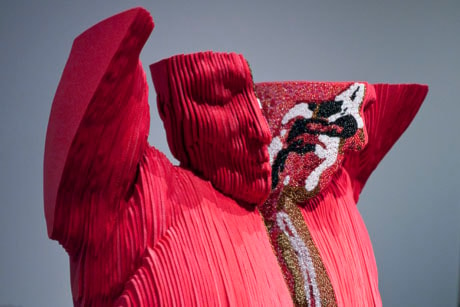CALGARY — The use of embryonic stem cells in regenerative medicine and therapeutic cloning has generated a maelstrom of public debate, but a new exhibit at Calgary’s Glenbow Museum allows the public to view the issue with a cool artistic eye.
The exhibition, Perceptions of Promise: Biotechnology, Society and Art, is aimed at advancing the heated discussion on stem-cell research.
Included in the multimedia exhibit are a sculpture made from the scans of human embryos, a tent with images of human cells and drawings of one of the artists’ chromosomes.
“We’ve got to appreciate the role and impact of pop culture in this whole process. We have to think of it as pop culture as part of the story. It is just having an impact on how it reflects and shapes public perceptions on this issue,” said Tim Caulfield, research director of the Health Law Institute at the University of Alberta, who along with his brother Sean organized the exhibition.
“You have those who’re against stem cell research taking on extreme ideas like reproductive cloning, ‘clone armies’ and the idea that we’re going to have half humans and half animals creatures developed,” he explained.
“Then on the side of those who support stem-cell research — those who want to garner public policy support for the field — almost out of necessity, (they) are using hype in their presentations of the promise of stem-cell research.”
The idea for the exhibition began last year with a gathering of artists, scientists and bioethicists like Caulfield.
The key to success is that the information on display doesn’t offer any opinions. It just gives the public an objective view without making any kind of judgment.
“What’s so interesting about this project is it really doesn’t take a position on some of these controversies but rather is merely educational and kind of open in how it engages with the subject matter,” said Kirstin Evenden, president and CEO of the Glenbow Museum.
“The artists have really spent a lot of time interacting with the scientists, learning about some of the challenges around the science of stem cell research and what it actually involves, scientifically, biologically and what the implications for research are long term,” she said.
This isn’t the first time the stem cell issue has made it into the arena of pop culture. It’s been touched on briefly in the television shows The Simpsons and Family Guy.
On The Simpsons, muscle-bound actor Rainier Wolfcastle said he disagreed with his Republican party’s position on stem cell research while running for mayor of Springfield.
On Family Guy, character Peter Griffin had the results of a stroke reversed completely after a five-minute session at a stem cell research facility; after the amazingly rapid procedure he exclaimed “Why aren’t we funding this?”.
“I use that stroke story in my lectures,” laughed Caulfield.
“I actually worry about copyright infringement.”
The exhibit will run until Mar. 20, 2011 and Caulfield said there is the possibility it could be taken on the road and shown at other venues in the future.
Sean Caulfield, a printmaking professor at the U of A, is the artistic one in the family. He said the public won’t be disappointed.
“One of the artists involved in this exhibition was at a workshop where she learnt that people were taking stem cells from liposuction and turning them into facial cream,” he said.
“So she made a figurative sculpture out of CT scans and carved the body open, as though the human is being harvested. This exhibition isn’t about taking sides in the stem-cell debate, it’s about creating a place for reflection.”
